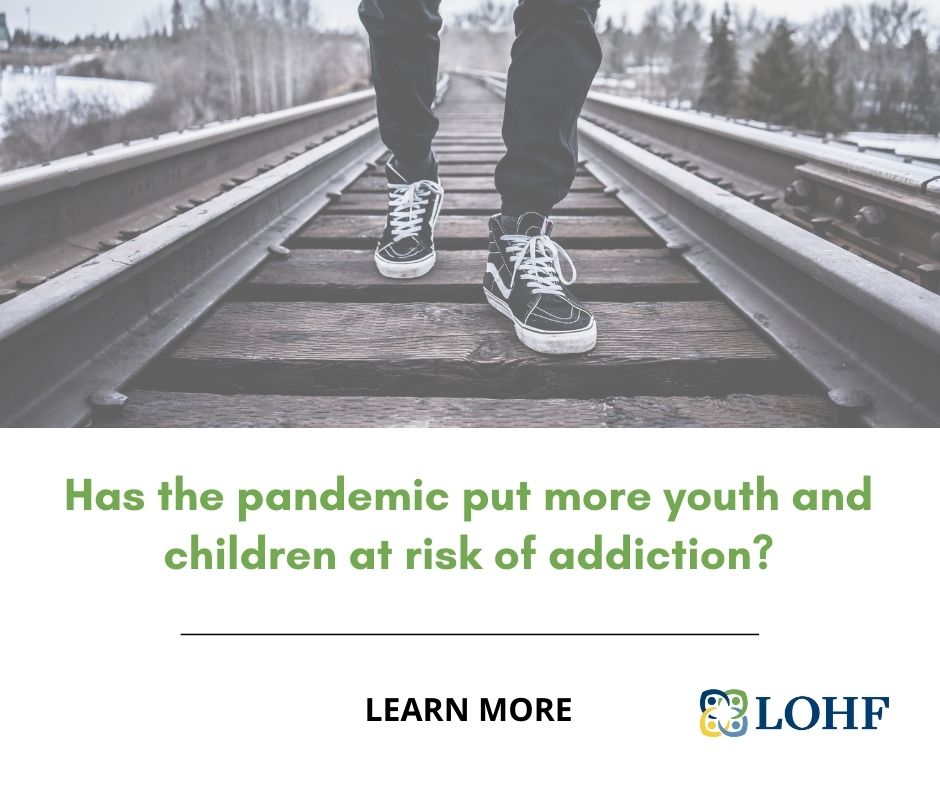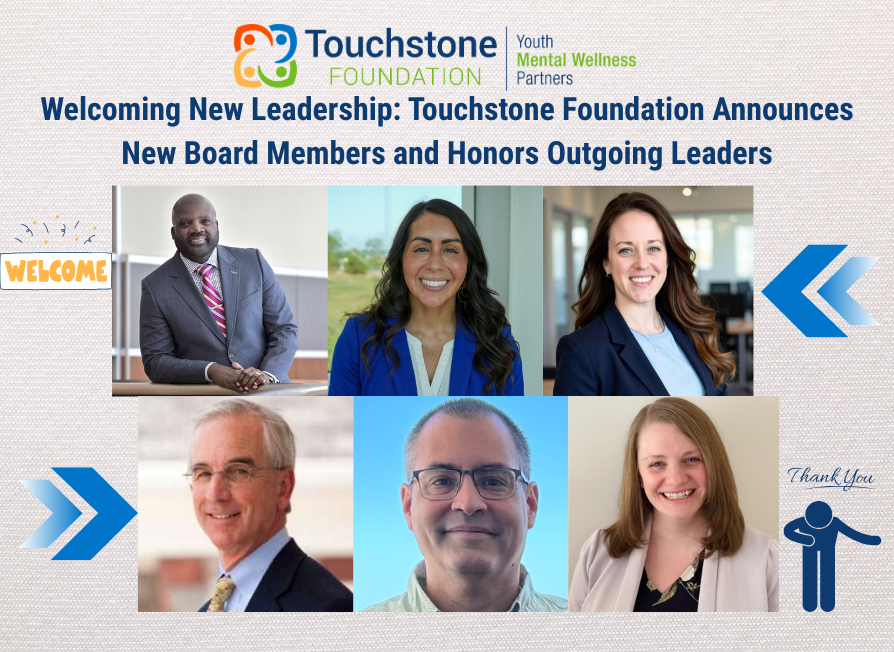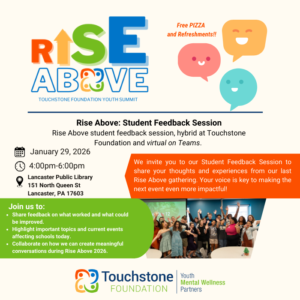
Has the pandemic put more youth and children at risk of addiction?
In a survey completed by the Addiction Policy Forum, 24% percent of respondents indicated that their substance use, or that of a family member, has changed because of COVID-19, with 20% reporting increased substance use. Certainly, this impacts youth and children in the home, increasing Adverse Childhood Experiences, which may be a contributing risk factor for a child to later struggle with addiction.
The childhood risk factors for developing addiction are complex. Resources and education are key to identifying and preventing addiction and its effects on families. LOHF Programs Manager Shanece Bowman interviewed Eric Kennel, Executive Director of Compass Mark, about this topic. Compass Mark is a recipient of LOHF Children’s Behavioral Health Grants.
What genetic dispositions contribute to Substance Use Disorder?
Like many common medical disorders, such as heart disease or diabetes, addiction is caused by a complex interplay of both biological and environmental factors. These influences differ from person to person, and there is no single factor that determines whether an individual will develop a substance use disorder. Recent research suggests that genes, including the effects of the environment on gene expression (epigenetics), account for between 40 to 60 percent of a person’s overall risk for addiction. Other biological factors that can impact an individual’s risk include gender, ethnicity, and the physiological makeup of the brain.
Scientists are also exploring the biological connections between mental health disorders, such as depression, schizophrenia, and bipolar disorder, and their underlying genetic associations which may elevate risk for addiction. Untreated mental illness, especially among youth or young adults, can lead to increased substance use and disruptions to the normal, healthy functioning of the brain.
What environmental factors contribute to substance use disorder?
Since genetic risk factors are not easily modified, those of us working in the field of prevention focus significant attention on addressing environmental risk factors. These fall within multiple domains which include family, school, community, and peer/individual. Within the family context, for example, a child’s risk of developing an addiction in the future is significantly increased if adult members of their household engage in drug use, are involved in the criminal justice system, or have a history of family conflict. Within the school and community domain, contributing risk factors may include low academic achievement and commitment to school, minimal neighborhood attachment, a high perceived availability of drugs, and negative peer influences.
A growing body of research indicates that children and adolescents who experienced traumatic events in their childhood have a significant higher risk of developing a substance use disorder. For adults that experienced four or more Adverse Childhood Experiences (ACEs) during their childhood, one report indicates a corresponding 10x increased likelihood of injecting illegal drugs and 7x increased risk for alcohol use disorder.
Another environmental factor that we pay close attention to in prevention is the age of first use. Although drug use at any age can lead to addiction, research shows that the earlier people begin the more likely they are to develop a substance use disorder due to the harmful effect of drugs on the developing brain.
Has there been a significant increase in demand of services regarding substance use due to the pandemic?
During the early stages of the pandemic, Compass Mark saw a sudden and significant decline in the number of people reaching out for support. This was likely a result of many people focusing during that time on their immediate basic needs, such as employment, housing, childcare, etc. As we’ve now moved into the later stages of the pandemic, the impacts of business shutdowns, social isolation, and ongoing anxiety and related trauma from the pandemic are now being seen in more tangible ways including increasing requests for mental health and substance use services. Unfortunately, over the past several months Lancaster County has experienced an increase in drug overdoses after several years of steady decline. Schools are anticipating that students will return in the fall with significantly increased needs and are reaching out to community partners for staff training and direct service support.
What resources are available at Compass Mark?
As a non-profit organization, Compass Mark’s mission is to prevent addiction through education, skill-building, and community mobilization. A few of the services available to Lancaster County families include:
- Addiction Resource Center: We provide confidential, one-on-one assistance with navigating local treatment and recovery support services. This is available Monday through Friday (9 a.m. to 5 p.m.) via phone at (717) 299-2831, email, or chat on the Website. We also provide a variety of trainings and presentations for employers, churches, community groups, and other providers on prevention and addiction-related topics.
- Family Services Advocate: This program provides case management and other supportive services for children with a parent incarcerated at Lancaster County Prison. The program is generously funded, in part, by LOHF and is designed to provide children and caregivers with resources to strengthen resiliency and overall wellbeing. Referrals can be made directly to Linsey Ober by email or (717) 299-2831, x229.
- Skills for Life: Compass Mark offers a group educational program for youth ages 13-25 who are experimenting with alcohol or other drugs or who have other associated risk factors. The Skills for Life program is offered monthly in the evening for a total of 12 hours and includes experiential life skills training and a parent education component. Referrals can be made directly to Matt Weaver by email or (717) 299-2831 x231.
- Evidence-Based Prevention Programs: We also offer a variety of prevention programs for children and youth in Grades K-12. These programs are available to schools or community groups in Lancaster County, and utilize curriculum proven to be effective for the prevention of substance abuse.
How can families affected by substance use disorder find help?
Regardless of your situation, the most important thing is to reach out for help! Many families in our community – approximately one in four – have been directly impacted by addiction and there are so many excellent resources and supports available.
One of the first resources that I encourage families impacted by substance use to check out is the Compass Mark. In addition to descriptions of our various programs, our Website also hosts numerous white papers and research briefs, links to additional resources, and directories of local treatment/recovery services.
Another excellent resource is Joining Forces for Children, a collaborative partnership among multiple Lancaster County agencies to serve children impacted by addiction. This also includes contact information for a Family Advocate to assist with resource navigation.
For those looking to learn more or connect with resources or advocacy efforts on a national scale, Partnership to End Addiction and the National Association for Children of Addiction are great places to start.





